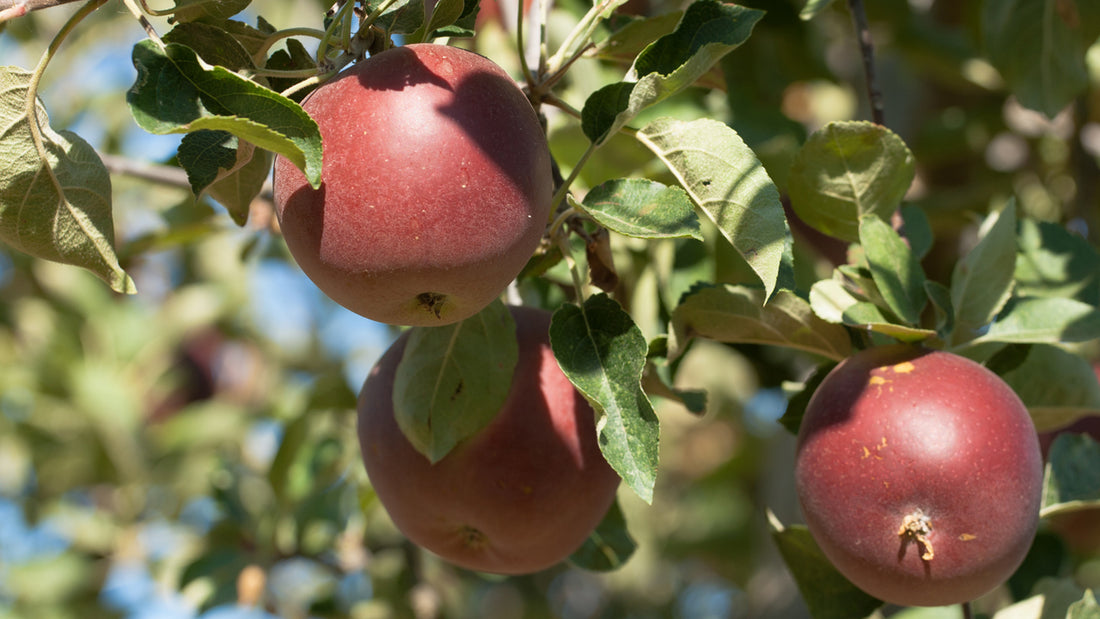Choosing A Location For Your Bare Root Fruit & Nut Trees
The fundamental considerations and subtle nuances of growing and caring for trees are beyond the scope of this introduction to bare root tree care. This information is one part of a series focused on how to plant bare root trees. Please see our resource center where we offer additional instructional videos and articles, as well as our bookstore.
Receiving Your Trees
When you receive your bare root trees, they will be boxed securely with their root system wrapped in plastic and their limbs and roots trimmed back (not fully pruned) to fit the package. First, inspect the bag and make sure that the media around the roots is moist. In the event that the media requires additional moisture, use a clean spray bottle to moisten it evenly.
If you are not ready to plant upon arrival, see the “Heeling In” section below. Make sure your tree’s roots do not freeze hard. Place them in a sheltered location like a garage if you expect a freeze before your trees are planted. It is essential that the young tree roots have plenty of time to become established before the tree begins its spring limb growth and bud break, so plant the tree while it is in deep dormancy.
Heeling In: Introduction
When your bare root trees arrive, open the plastic bags immediately. It is best practice for bare root tree care to plant right away, within a week of delivery. If you cannot plant right away, you may “heel in” the trees to protect them and keep them alive (but still dormant) until you are able to plant them in their permanent spot.
Heeling In: Outdoors
To heel in bare root trees outside, pick a location that is shielded from wind. Dig a trench about twice as deep as the roots are long, with one side of the trench sloping at a 45° angle. Place the tree roots side down, so that the trunks are supported by the sloping side.
Cover the roots with sawdust, dirt, wood shavings to retain moisture. Don’t use cedar or redwood shavings because they are toxic to the trees, be sure to keep the root area moist, and gently tamp down to avoid air pockets. Periodically check the root area, keeping the soil moist.
Heeling In: Indoors
To heel in bare root trees indoors, whether due to snow or a frozen ground, choose a cool place like a root cellar, basement, or garage. It’s important to choose a place where the temperature stays between 38°F and 45°F. This is important so the tree roots neither freeze, nor does the tree break dormancy.
Place the roots in a container and cover the roots with sawdust, dirt, wood shavings. Don’t use cedar or redwood shavings because they are toxic to the trees, and be sure to keep the root area moist. See our “Heeling in Bare Root Trees” video for more details.
If you don’t have a permanent location for your tree or are just not ready to plant it in the ground, you can plant it in a pot for a short-term solution. It is recommended to use at least a 10 gallon pot. Nut trees have a very large root system and should be planted in the ground (not recommended to plant in a pot).
Planting Location
Fruit trees are a long-term investment and caring for them properly, right from the start, will ensure years of enjoyment and productivity. Maintenance will be greatly minimized as the tree matures, if you provide adequate care early on. Therefore, you should carefully choose a planting location.
Light and Air
Even an hour or two of extra shade a day can noticeably reduce growth and productivity. Fruit trees should be planted in a sunny location where air circulation (wind or breezes) is not impeded by natural or man-made windbreaks. If the tree requires a pollinator for fruit production, it is necessary for that pollinator to be established or planted in the same area.
Drainage
Choosing a location with good soil drainage is very important, as poorly drained soil will stunt, and may even kill trees by suffocating their root systems or harboring anaerobic soil pathogens. To test for proper drainage, the planting hole should be filled twice with water and allowed to drain; 12–14 hours is the maximum amount of time it should take for all of the water to drain out.
Soil Analysis
A soil analysis is recommended to determine any soil deficiencies, but this can be delayed until the tree has begun to establish itself. A gradual application of proper soil amendments will suffice if proper sunlight and drainage are available from the start. However, in the long-term, calcium, magnesium, phosphorus and potassium along with sufficient nitrogen will significantly enhance tree health and fruit quality.
The tree's root system will reach out from the trunk at a distance at least equal to the leafy canopy above and to a depth of 4’ to 6’. It is very important that the soil around the tree be worked and amended in as large an area as possible, preferably before you plant the tree. Contact your local Master Gardeners to see if there are any recommended amendments for your area.
For more information on planting your bare root tree, please see our resource center.
We also offer a wide variety of bare root trees for sale. Bare root fruit trees, bare root nut trees, and also many potted trees and citrus trees for sale.

